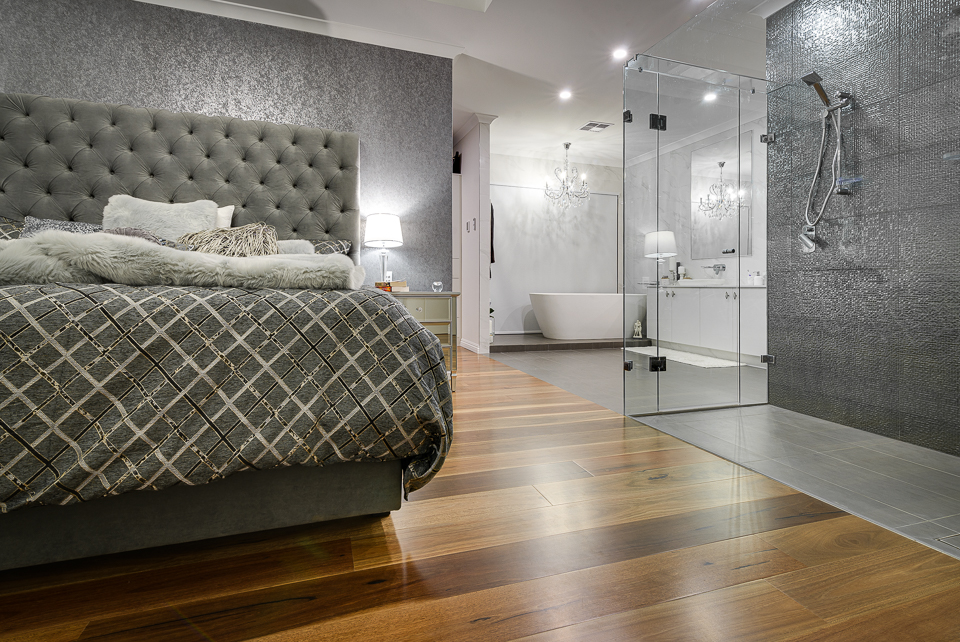The use of timber dates from the beginning of human history. At first, twigs and branches were used to build crude forms of shelter. Larger and heavier timbers were later used to build stronger and more enduring structures.
Timber as a structural building and flooring material was widely deployed in northern climates, due to the abundance of larger trees. These were milled to provide larger posts, beams, planks and boards. The harder and denser the timber, the more durable the structure became. Hardwoods like oak, ash, and maple were used to build strong, stout structures including durable floors. Shipwrights also exploited these timbers.
Until the Middle Ages, most floors were packed earth, stone or brick at the ground level. Rough-hewn oak or pine planks were used on upper floors. The timber trade was blooming and timber was milled onsite using saws, axes and chisels. Planks were hand-planed. There were no standard sizes, and few boards had equal widths. They were usually left untreated and regularly scrubbed with sand.
As some people became wealthier, more elaborate floors began to emerge. Some hand-cut pieces were inlaid into the floor patterns for the wealthy. More expensive floors were stained with various colours. The most valuable used parquet and even marquetry.
From the 1600s, some floors had painted patterns applied to form designs, especially in the Netherlands. Later, stained and polished wooden floorboards around the perimeter of rooms were used to frame carpets. During this time, elaborately painted ‘ornamental’ oilcloths sealed the floors which later became the foundation for linoleum. Timber varnishes were also used for the first time.
The industrial age and more precise machinery led to finer milling and standard sizing. More intricate designs began to be handcrafted into the wood. Ornate parquet patterns were developed, some of which are still in use today. Later, the arrival of steam and electric power led to better housing and an increased demand for wood flooring material.
Oak was the main timber used mostly due to its availability, low cost, easy machining, strength and beauty. Oak became the most popular finished flooring material for housing in both Europe and North America. Expanding demand and increasing world commerce saw the use of different domestic ‘hardwoods.’ Exotic species such as teak and mahogany began to be imported.
Alongside timber, the industrial revolution and changing design trends saw several new flooring options emerge (carpet, resilient flooring, ceramic, plus stone tiles and ‘bare’ concrete). Hardwood faced strong competition. Where once carpet was for the wealthy only, by the 1970s, it was everywhere – even in the least expensive homes.
Hardwood floors became the floor of choice for higher-priced, customised homes and for those seeking to enhance the value of their property (a factor that continues to influence the floor type chosen, today).
However, new patterns, textured surfaces, and new finishes have since reinvigorated hardwood flooring.
Timber Technology
New technology resulted in ‘engineered’ flooring. New installation systems and more eco-friendly adhesives mean there is now a wider variety of flooring materials from which to choose. Hardwood flooring can be glued to concrete, plywood, and old floors.
Then, during the early 2000s, Bamboozle, a West Australian flooring specialist, developed and patented stabilised prefinished flooring for both timber and bamboo.
Unlike engineered flooring, the stabilised flooring process developed by Bamboozle uses three layers of natural timber from the same milled log: the top layer is selected for its most appealing aesthetic, the middle and bottom layers are glued under pressure to provide exceptional strength.
The process ensures the boards will not cup (warp), bend or stretch. Given several coats of polyurethane, Bamboozle stabilised floors are tough, durable, moisture-resistant and guaranteed for life. Glued directly to a flat, dry concrete sub base by certified floor installers, they may be re-sanded and re-finished several times during their lifetime.
Last Thursday, Bamboozle completed a stabilised French Oak timber floor for this new home in Harrisdale, a southern suburb of Perth (see photo above), much to owners’ delight.
